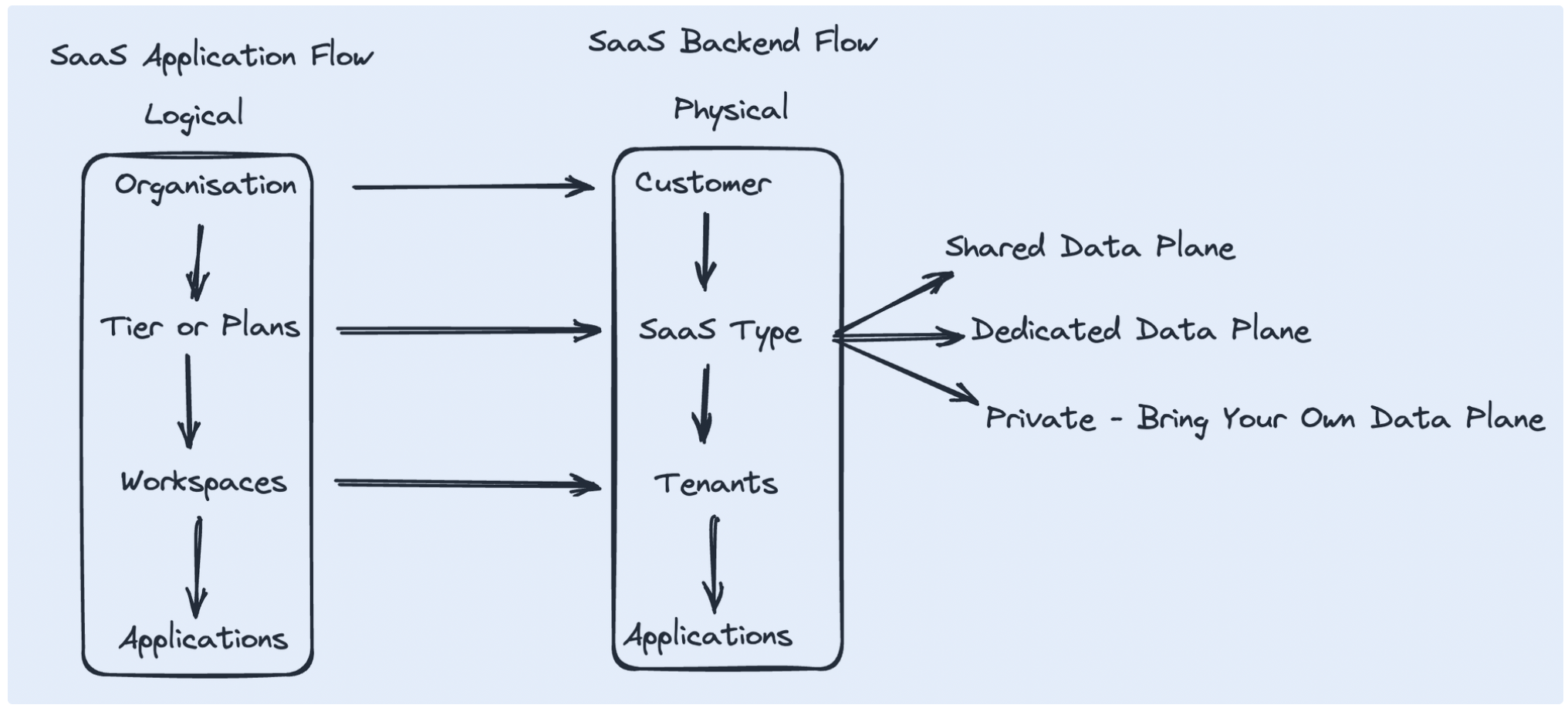In our previous post, "Centralised Control Planes for SaaS - Part 2," we discussed about the approaches to build a stateless control plane and how to handle async communication b/w the data planes and cloud provider. In this instalment we take dive into the physical and logical models in a SaaS control planes.
Introduction
As we build a robust SaaS architecture understanding of logical and physical mappings is essential. These mappings serve as tools in aiding SaaS developers in the translation of user-facing processes into corresponding SaaS backend workflows.
Logical Model and Physical Model
The logical model encompasses metadata pertaining to various aspects of the system:
- Organisations: Every user using the SaaS platform belongs to an organisation. Organisation is a customer for the SaaS provider.
- Tiers or Plans: The different levels of service or subscription plans offered to users.
- Workspaces: Dedicated spaces for users to collaborate and deploy applications.
- Applications: Software applications and services provided within the SaaS framework.
This metadata is stored in metadata DB. It is important to note that for each logical entity, there exists a corresponding physical entity in the system.
The physical model, deals with the tangible, real-world bindings to the underlying infrastructure that supports the SaaS architecture. These physical include:
- Customer: A customer is an organisation.
- Data Planes: Data Planes are where the software is deployed. They can be in the SaaS provider network or in the customer network.
- Tenants: Segregated sections or environments within the architecture, often employed for multi-tenancy support.
- Applications: Application denotes the SaaS provider's application.
This diagram displays mapping between the logical and physical terminologies.

Relationship Model
Here we understand the relation between each of the components described within the logical and physical model.
Organisation, Workspace and Applications ( Logical )
- Organisation onboarded is a customer for the SaaS Provider.
- Organisation can consists of a single workspace or multiple workspace.

Tiers or Plans and SaaS Types ( Logical to Physical )
- A Tier or Plan is offered by the SaaS provider.
- Each Tier or Plan has a quota limit on the usage of the SaaS product.
- Organisation onboarded have a SaaS Tier associated with them.
- Each tier is mapped to a SaaS Type.

SaaS Types and Data Planes ( Conceptual to Physical )
- Each SaaS Type is mapped to a data plane.note
SaaS Type is a conceptual model. Each SaaS Type has a physical mapping ie data planes. Data Planes as an abstraction consist of network, storage and kubernetes.

End to End Mapping between Logical and Physical Models
- The logical entities is metadata stored in the database.
- For each entity stored a physical entity is created.

Summary
SaaS architecture relies on logical and physical models. These models aid developers in bridging user processes with backend workflows. If you are building a SaaS, and want to build a control plane, feel free to get connected with us.